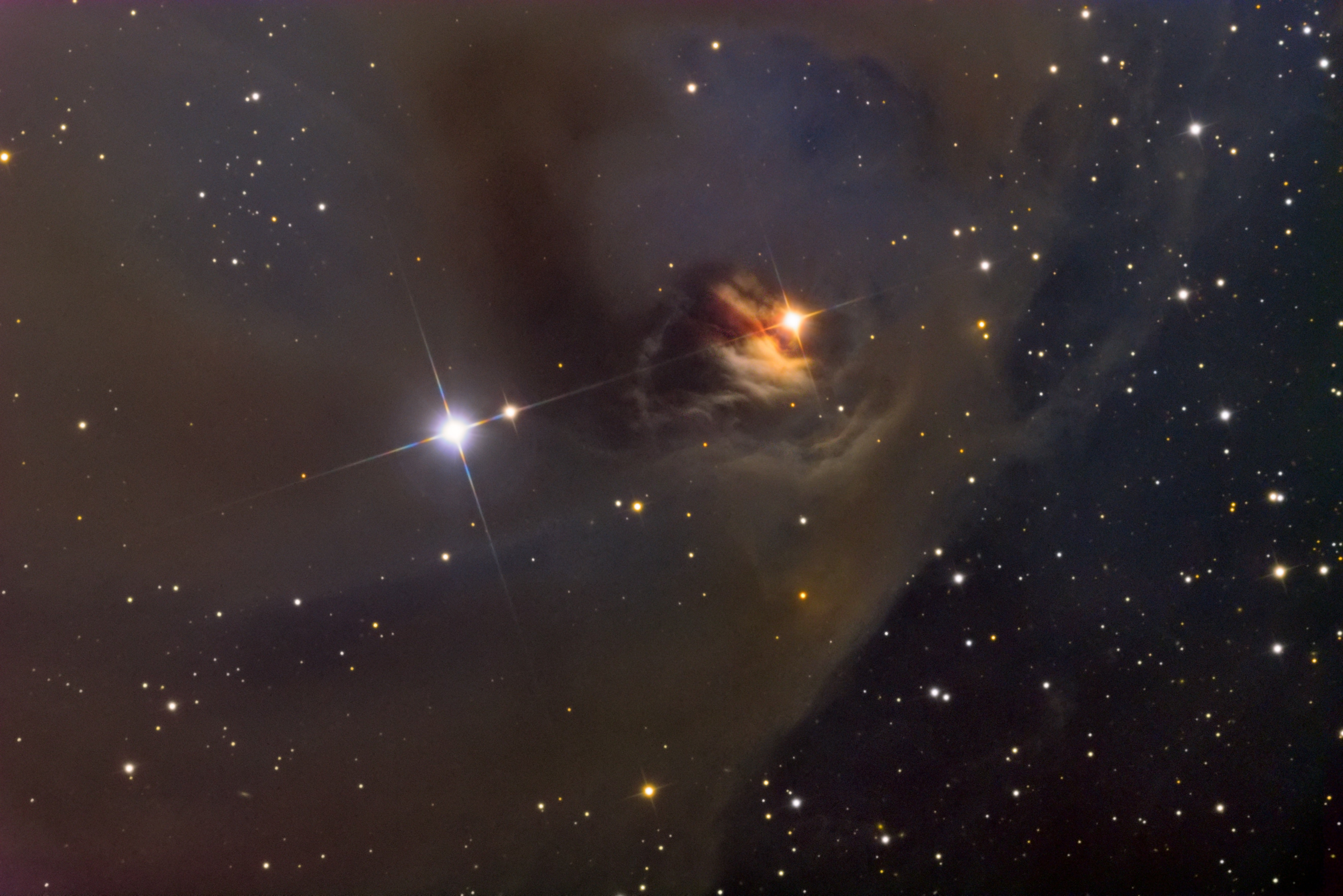
This emission nebula in the constellation Taurus the Bull, cataloged as NGC 1554/55, combines two objects in one. At least, it used to. Observers call NGC 1555 Hind’s Variable Nebula. They call NGC 1554 Struve’s Lost Nebula, a name that pretty much says it all.
Both common names refer to the 19th-century astronomers who discovered the respective objects. British astronomer John Russell Hind discovered NGC 1555 in 1852. It remained visible for a few years, but then faded from view. Russian astronomer Otto Wilhelm von Struve subsequently observed the nebula, but it had again disappeared by 1868. When examining the region early that year, Struve found another small nebula. He gave its position as 4′ to the west-southwest of T Tauri, the variable star whose outflow interacting with the interstellar medium created the nebula. Subsequent observations showed no object.
In 1890, American astronomer Edward Emerson Barnard found a position error for the star T Tauri and suggested that other astronomers had been looking in the wrong place for NGC 1554. In March of that year, using the 36-inch refractor at Lick Observatory, he glimpsed a faint nebula at the position he had calculated, along with NGC 1555. No observer has seen NGC 1554 since.
To start your search for Hind’s Variable Nebula, head 1.7° west-northwest of magnitude 3.5 Epsilon (ε) Tauri. Use a finder chart to identify the star SAO 93887, which glows at magnitude 8.4. From there, move 5′ to the northeast where you’ll find T Tauri. Although it’s a variable star, it usually shines at magnitude 9.6. NGC 1555 appears as a faint wisp of nebulosity only 1′ across near T Tauri. Use the largest telescope you have access to, a high-power eyepiece, and a nebula filter, which will dim the star a bit.









